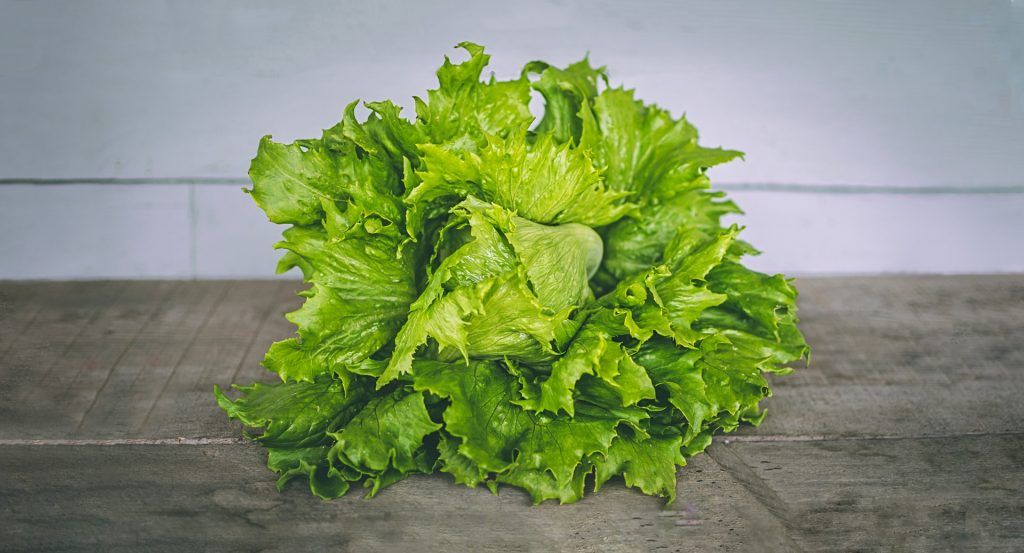Iceberg lettuce is crunchy in taste and pale vegetable that you can add to your burger or in diner salad when you eat out. It is neutral in taste and a refreshing crunch. It makes a favourite among children who won’t eat other kinds of lettuce. It is not as rich in nutrition as many different greens, but it does provide several benefits.
Nutritional benefits of iceberg lettuce
Table of Contents
It is said that the iceberg Lettuce is a complete zero on the nutritional scale. Still, it provides significant amounts of vitamins A and K. It also has small amounts of many other healthy nutrients. Although it’s low in fibre, it has high water content, making it a refreshing choice during hot weather. It also contributes us Potassium, vitamin C, Calcium, and folate.
The nutrients in iceberg lettuce can help individuals meet the basic daily requirements for several vitamins and minerals. They include:
· Vitamin C is a powerful antioxidant that helps keep your immune system healthy.
· Calcium keeps your bones and teeth strong. It also supports muscle function, blood clotting and nerve function.
· Vitamin K works with Calcium to prevent bone fractures. It’s also integral for blood clotting.
· Vitamin A is known as a powerful antioxidant that helps to maintain night vision and eye health. It also supports cell growth.
· Folate or Vit- B helps to make DNA and genetic material. It is essential for women who are pregnant or who are planning to become pregnant.
· Potassium is a mineral that reduces blood pressure by reducing the effects of salt in diet.
How different is iceberg lettuce compare to other types?
Iceberg lettuce, like other leafy greens, is low in calories, sugar, and fat. Iceberg lettuce is only about one calorie per leaf, according to a Trustworthy Source. In addition, it has more water than many other lettuce varieties. Iceberg lettuce may not be as vitamin or nutrient-dense as darker, more colourful lettuce varieties like red leaf lettuce or spinach, but it can still be part of a balanced diet.
How to use iceberg lettuce at home
Always search for iceberg lettuce with no loose leaves while you’re shopping for it. There should be no brown edges or stains on the leaves. Many people tend to remove the outer leaves before eating them, but this isn’t essential if you wash them thoroughly. Keep iceberg lettuce refrigerated at all times and eat it within a few days of purchasing. It has a mild flavour, which makes it adaptable to many salads and other recipes. If you add an iceberg lettuce leaf to your meal, it provides a little bit of added nutrition. However, don’t cook it for too long, or you’ll eliminate the iceberg’s crunch. Iceberg lettuce is refreshing if added to any salad and is perfect to pair with homemade crumbled blue cheese dressing. Try dressing in a big wedge of iceberg lettuce combined with tomatoes, blue cheese crumbles, and lemon juice. Iceberg lettuce can be mixed with other greens for added texture and colour. It has a complimentary taste of fruit nicely. Try combining it with green grapes, grilled chicken, and a light raspberry vinaigrette for a refreshing summer lunch.
Tips for growing iceberg Lettuce

Iceberg lettuce grows in a small, dense head. They are commonly used in sandwiches and salads, with having prized more for their texture and crispiness than for the flavour of the leaves. Iceberg was first cultivated in the Salinas Valley of California, then packed in ice and distributed across the US on trains.
1. Lettuce thrives in full sun, yet too much heat can cause plants to bolt and leaves to wilt. Seeds can be grown in flats four weeks before the last frost date and transplanted outside in mid to late spring for an early start. To protect lettuce from the potentially damaging effects of extreme heat in the summer, choose a partially shaded position or one that receives mostly eastward exposure. Lettuce may grow in various soils, but it loves a well-drained, excellent, loose soil with plenty of Moisture and a pH of 6.2 to 6.8. Low pH sensitivity. Lime to a minimum of 6.0. Make sure the site is rich in organic compost matter to stimulate tender and flavorful growth. Prioritize your changes.
2. Sowing-Early in the spring, as soon as the soil can be worked, direct seed or transplant. Prepare beds the previous fall to get a head start by working in manure or compost and raking smooth to leave a fine seedbed. To ensure that seeds germinate, sow them at a shallow depth and cover them with a thin layer of growing material.
3. Direct-seeding– 1/8 inch deep, 1 inch apart in rows 12 to 18 inches apart, sow seed 1/8 inch deep, 1 inch apart. Thin to 12-inch spacings for crisphead varieties and 6 to 10 inches for other types when plants have two or three real leaves. Instead of a row, you might lightly distribute seed (especially looseleaf kinds) in a patch.
4. Transplants- Sow in 1-inch cells 3 to 4 weeks before transplanting outside—Harden seedlings by reducing water and temperature three days before transplanting. Hardened plants should survive 20 F. Space crisphead transplants 12 inches apart in rows 18 inches apart. Space other varieties 6 to 10 inches apart in rows 12 to 18 inches apart.
5. Maintaining– Using row covers to protect very budding plantings from cold, to protect the fledgling plant from insects, and (especially by hoops) to shade crops when hot weather arrives and make succession plantings every week or two, and helps to grow several varieties with different maturity dates for a continuous supply. Moisture, stress, and high temperatures, particularly at night, encourage bolting. As the season progresses, the plant becomes more bolt-resistant varieties. Relocate plants where they will be partially shaded by taller nearby plants, latticework or other screens.
Iceberg lettuce can be suitable as a base ingredient for a healthy salad, either on its own or in other greens. To ensuring a wide variety of nutrients and flavours, people may add:
· Pinch of Peppers with tomatoes, avocado, radish carrots, or broccoli
· sliced apple, pear, watermelon, or raisins
· seeds and sometimes nuts
· a healthy dressing, such as olive, hemp, or avocado oil mixed with lemon juice or cider vinegar for a taste.
· Iceberg lettuce is also famous for filling in sandwiches, burgers, and wraps.
Conclusion
Iceberg lettuce is a nutritionally beneficial addition to one’s diet. However, it has fewer nutrients than other forms of lettuce. Therefore people should eat a variety of them. Spinach, for example, has a higher nutritional profile and can be used instead of or in addition to iceberg lettuce. When using iceberg lettuce, proper hygiene and refrigeration are required to avoid food poisoning. To eliminate pollutants and chlorine residues, fresh, entire lettuce may be a preferable option. Before eating, it can be washed under running water and dried with a paper towel or salad spinner. Iceberg lettuce has a good crisp and goes well with salads, wraps, burgers, and sandwiches.
